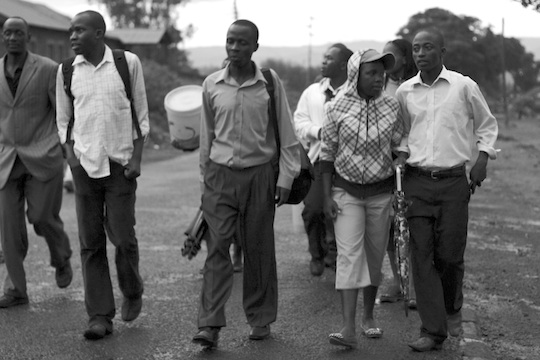In the Void of Education – Part 2
This topic begins with Part 1.
I have spent ample time in Africa to understand the impact of poor education. It affects people in so many ways. Decisions which concern money, family, religion—even the ability to plan for something more than a few days ahead requires some degree of education. Without it, we are but responding to emotion, our logic limited as leverage for the given situation.
Prior to my interview with a student and teacher I believed an improvement in African education was about computers in the classroom and an Internet connection. Surely, these two combined would bridge the majority of the gaps.
Instead, through my own experience and subsequent conversations with Chuck and Mponda, I realized it is the total teaching system which is at the root of the issue for the teachers themselves are unwilling to teach beyond their own knowledge.
In the West we make the mistake of assuming that because access is granted to a resource, it will automatically be engaged, taken advantage of. My experience in Palestine last year was direct evidence for the contrary. Countless thousands of videos on YouTube and an equal number of publications about both sides of the Israeli-Palestinian conflict are immediately available, yet the vast majority of American’s remain ignorant due to the filtered media they choose to accept as fact.
African college students log on to Facebook each day, yet have never used Google nor heard of Wikipedia. Millions of pages of free information available at the touch of a finger tip, yet donated computers often end up locked away in a storeroom, only brought out into the class when the donor arrives for an annual visit, check in hand. The teacher’s lack of comfort with any given teaching technique and associated technology is the greatest barrier to education, everywhere.
When someone does not understand the very basics of applied science, whether it is biology, chemistry, geology or physics, how can this not affect the decisions he or she makes? How can government policies, both local and national, not be heavily influenced by the education of decision makers?
Last week a South African governor declared a 500,000 Rand fine for any witch caught flying across the border from Swaziland above 150 meters elevation. Is this any more ludicrous than an American congressman who is totally ignorant of the scientific method and associated data collection techniques declaring global warming a conspiracy of scientists the world-over, or demanding that the Christian creation story be taught along side evolution as the means by which life was given form on this planet?
The void of education is not only in Africa. It is everywhere, affecting all of us.
This topic is continued in Part 3.






